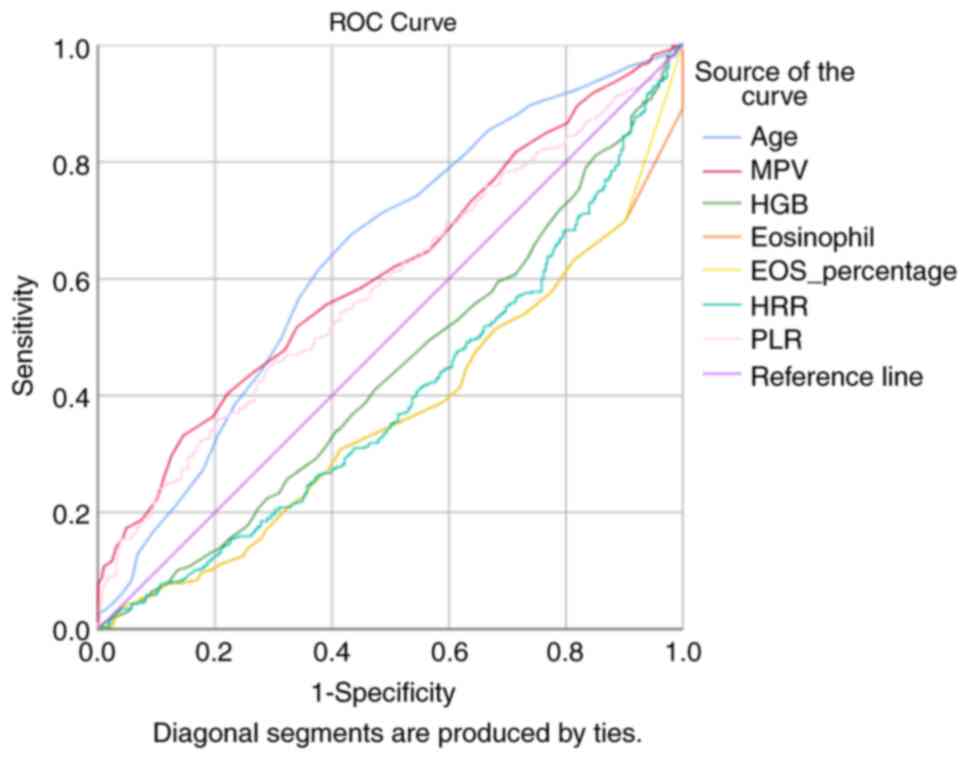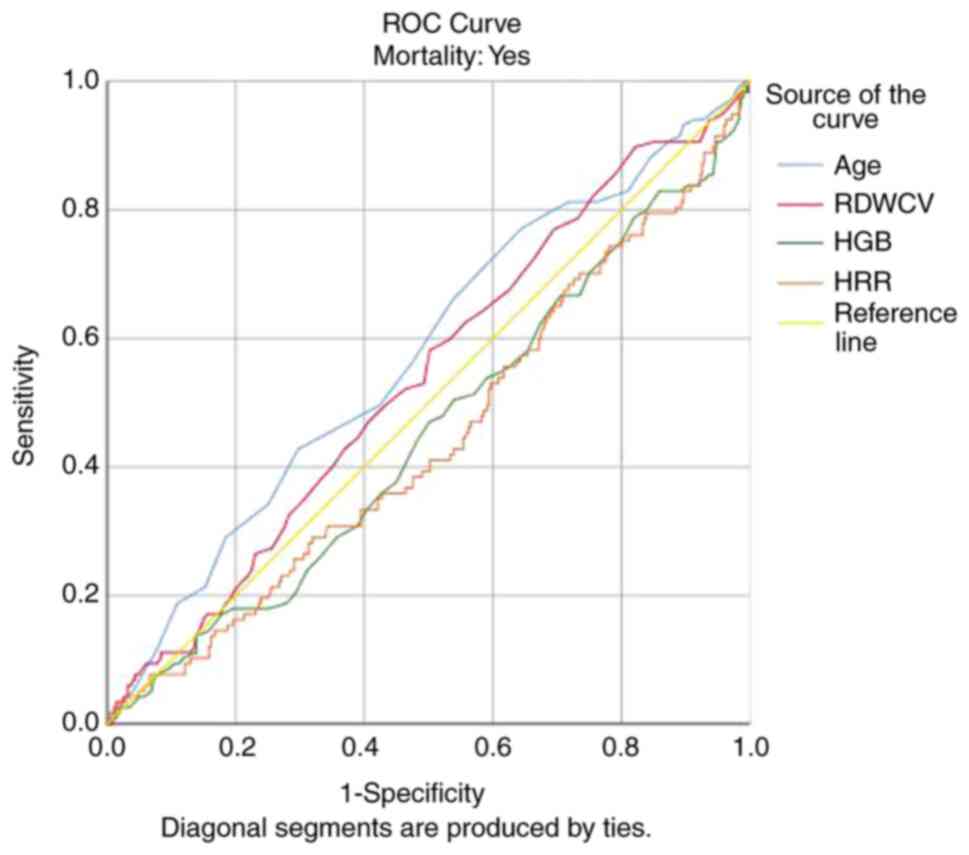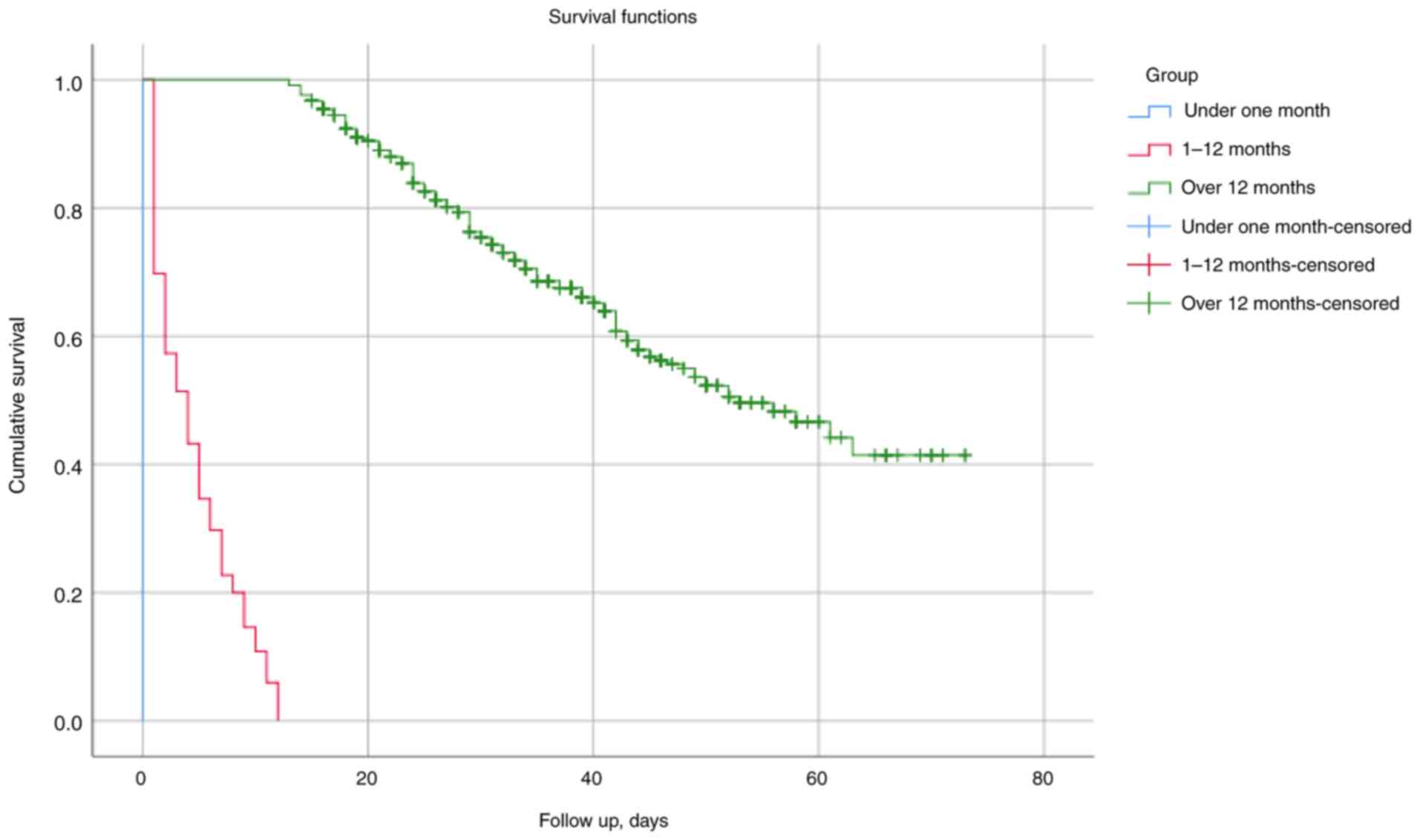|
1
|
Nethander M, Coward E, Reimann E, Grahnemo
L, Gabrielsen ME and Wibom C: Estonian Biobank Research Team. Mägi
R, Funck-Brentano T, Hoff M, et al: Assessment of the genetic and
clinical determinants of hip fracture risk: Genome-wide association
and Mendelian randomization study. Cell Rep Med.
3(100776)2022.PubMed/NCBI View Article : Google Scholar
|
|
2
|
Zhang YW, Lu PP, Li YJ, Dai GC, Chen MH,
Zhao YK, Cao MM and Rui YF: Prevalence, characteristics, and
associated risk factors of the elderly with hip fractures: A
cross-sectional analysis of NHANES 2005-2010. Clin Interv Aging.
16:177–185. 2021.PubMed/NCBI View Article : Google Scholar
|
|
3
|
Meyer AC, Ek S, Drefahl S, Ahlbom A,
Hedström M and Modig K: Trends in hip fracture incidence,
recurrence, and survival by education and comorbidity: A Swedish
register-based study. Epidemiology. 32:425–433. 2021.PubMed/NCBI View Article : Google Scholar
|
|
4
|
Llopis-Cardona F, Armero C, Hurtado I,
García-Sempere A, Peiró S, Rodríguez-Bernal CL and Sanfélix-Gimeno
G: Incidence of subsequent hip fracture and mortality in elderly
patients: A multistate population-based cohort study in Eastern
Spain. J Bone Miner Res. 37:1200–1208. 2022.PubMed/NCBI View Article : Google Scholar
|
|
5
|
Pollmann CT, Røtterud JH, Gjertsen JE,
Dahl FA, Lenvik O and Årøen A: Fast track hip fracture care and
mortality-an observational study of 2230 patients. BMC
Musculoskelet Disord. 20(248)2019.PubMed/NCBI View Article : Google Scholar
|
|
6
|
Garre-Fivelsdal TE, Gjertsen JE, Dybvik E
and Bakken MS: A standardized clinical pathway for hip fracture
patients is associated with reduced mortality: Data from the
Norwegian hip fracture register. Eur Geriatr Med. 14:557–564.
2023.PubMed/NCBI View Article : Google Scholar
|
|
7
|
Kjærvik C, Gjertsen JE, Stensland E,
Saltyte-Benth J and Soereide O: Modifiable and non-modifiable risk
factors in hip fracture mortality in Norway, 2014 to 2018: A linked
multiregistry study. Bone Joint J. 104-B:884–893. 2022.PubMed/NCBI View Article : Google Scholar
|
|
8
|
Holvik K, Ellingsen CL, Solbakken SM,
Finnes TE, Talsnes O, Grimnes G, Tell GS, Søgaard AJ and Meyer HE:
Cause-specific excess mortality after hip fracture: The Norwegian
epidemiologic osteoporosis studies (NOREPOS). BMC Geriatr.
23(201)2023.PubMed/NCBI View Article : Google Scholar
|
|
9
|
Chen Z, Zhao G, Chen F, Xia J and Jiang L:
The prognostic significance of the neutrophil-to-lymphocyte ratio
and the platelet-to-lymphocyte ratio in giant cell tumor of the
extremities. BMC Cancer. 19(329)2019.PubMed/NCBI View Article : Google Scholar
|
|
10
|
Gao Z, Zhao K, Jin L, Lian X, Zhang Z, Ma
L and Hou Z: Combination of neutrophil to lymphocyte ratio,
platelet to lymphocyte ratio with plasma D-dimer level to improve
the diagnosis of deep venous thrombosis (DVT) following ankle
fracture. J Orthop Surg Res. 18(362)2023.PubMed/NCBI View Article : Google Scholar
|
|
11
|
Yapar A, Tokgöz MA, Yapar D, Atalay İB,
Ulucaköy C and Güngör BŞ: Diagnostic and prognostic role of
neutrophil/lymphocyte ratio, platelet/lymphocyte ratio, and
lymphocyte/monocyte ratio in patients with osteosarcoma. Jt Dis
Relat Surg. 32:489–496. 2021.PubMed/NCBI View Article : Google Scholar
|
|
12
|
Wang Z, Wang H, Yang L, Jiang W, Chen X
and Liu Y: High platelet-to-lymphocyte ratio predicts poor survival
of elderly patients with hip fracture. Int Orthop. 45:13–21.
2021.PubMed/NCBI View Article : Google Scholar
|
|
13
|
Wang Z, Wang Y, Wang Y, Chen W and Zhang
Y: Are postoperative NLR and PLR associated with the magnitude of
surgery-related trauma in young and middle-aged patients with
bicondylar tibial plateau fractures? A retrospective study. BMC
Musculoskelet Disord. 22(816)2021.PubMed/NCBI View Article : Google Scholar
|
|
14
|
Zhang X, Duan J, Wen Z, Xiong H, Chen X,
Liu Y, Liao K and Huang C: Are the derived indexes of peripheral
whole blood cell counts (NLR, PLR, LMR/MLR) clinically significant
prognostic biomarkers in multiple Myeloma? A systematic review and
meta-analysis. Front Oncol. 11(766672)2021.PubMed/NCBI View Article : Google Scholar
|
|
15
|
Yao W, Wang W, Tang W, Lv Q and Ding W:
Neutrophil-to-lymphocyte ratio (NLR), platelet-to-lymphocyte ratio
(PLR), and systemic immune inflammation index (SII) to predict
postoperative pneumonia in elderly hip fracture patients. J Orthop
Surg Res. 18(673)2023.PubMed/NCBI View Article : Google Scholar
|
|
16
|
Yılmaz K and Turanlı M: A
multi-disciplinary investigation of linearization deviations in
different regression models. Asian J Probab Stat. 22:15–19.
2023.
|
|
17
|
Tarazona-Santabalbina FJ, Ojeda-Thies C,
Figueroa Rodríguez J, Cassinello-Ogea C and Caeiro JR:
Orthogeriatric management: Improvements in outcomes during hospital
admission due to hip fracture. Int J Environ Res Public Health.
18(3049)2021.PubMed/NCBI View Article : Google Scholar
|
|
18
|
Boutera A, Dybvik E, Hallan G and Gjertsen
JE: Is there a weekend effect after hip fracture surgery? A study
of 74,410 hip fractures reported to the Norwegian hip fracture
register. Acta Orthop. 91:63–68. 2020.PubMed/NCBI View Article : Google Scholar
|
|
19
|
Lewis SR, Macey R, Eardley WG, Dixon JR,
Cook J and Griffin XL: Internal fixation implants for intracapsular
hip fractures in older adults. Cochrane Database Syst Rev.
3(CD013409)2021.PubMed/NCBI View Article : Google Scholar
|
|
20
|
Ratnasamy PP, Rudisill KE, Oghenesume OP,
Riedel MD and Grauer JN: Risk of contralateral hip fracture
following initial hip fracture among geriatric fragility fracture
patients. J Am Acad Orthop Surg Glob Res Rev.
7(e23.00001)2023.PubMed/NCBI View Article : Google Scholar
|
|
21
|
Schemitsch E, Adachi JD, Brown JP, Tarride
JE, Burke N, Oliveira T and Slatkovska L: Hip fracture predicts
subsequent hip fracture: A retrospective observational study to
support a call to early hip fracture prevention efforts in
post-fracture patients. Osteoporos Int. 33:113–122. 2022.PubMed/NCBI View Article : Google Scholar
|
|
22
|
Nijmeijer WS, Voorthuis BJ,
Groothuis-Oudshoorn CGM, Würdemann FS, van der Velde D,
Vollenbroek-Hutten MMR and Hegeman JH: Dutch Hip Fracture Audit
Taskforce Indicators Group. The prediction of early mortality
following hip fracture surgery in patients aged 90 years and older:
The Almelo hip fracture score 90 (AHFS90). Osteoporos
Int. 34:867–877. 2023.PubMed/NCBI View Article : Google Scholar
|
|
23
|
Ding L, Wei J and Wang B: The impact of
COVID-19 on the prevalence, mortality, and associated risk factors
for mortality in patients with hip fractures: A meta-analysis. J Am
Med Dir Assoc. 24:846–854. 2023.PubMed/NCBI View Article : Google Scholar
|
|
24
|
Turgut N and Ünal AM: Standard and newly
defined prognostic factors affecting early mortality after hip
fractures. Cureus. 14(e21464)2022.PubMed/NCBI View Article : Google Scholar
|
|
25
|
Ekinci M, Bayram S, Gunen E, Col KA,
Yildirim AM and Yilmaz M: C-reactive protein level, admission to
intensive care unit, and high American society of anesthesiologists
score affect early and late postoperative mortality in geriatric
patients with hip fracture. Hip Pelvis. 33:200–210. 2021.PubMed/NCBI View Article : Google Scholar
|
|
26
|
Niu S, Pei Y, Hu X, Ding D and Jiang G:
Relationship between the neutrophil-to-lymphocyte ratio or
platelet-to-lymphocyte ratio and deep venous thrombosis (DVT)
following femoral neck fractures in the elderly. Front Surg.
9(1001432)2022.PubMed/NCBI View Article : Google Scholar
|












